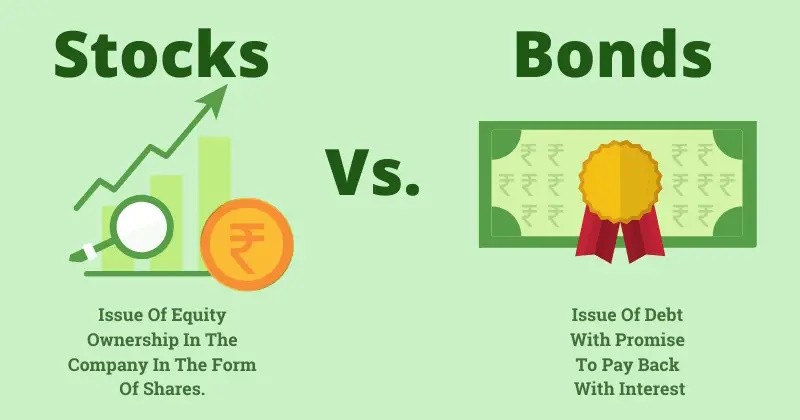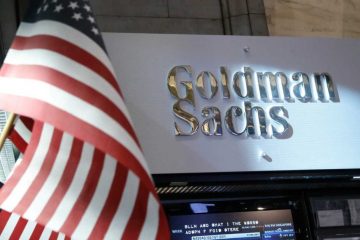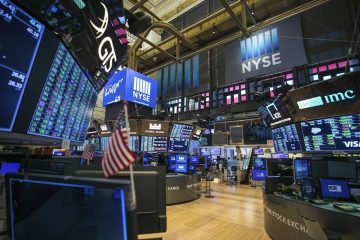The Benefit of Owning Stocks Over Bonds Keeps Shrinking

The extra reward for holding stocks instead of bonds has fallen to its lowest level in 20 years, threatening a recent hot streak for major indexes. One method for gauging the value of stocks is to compare their earnings yield—calculated by dividing a company’s expected earnings over the next year by its stock price—to the yield on government bonds, considered the closest thing to a risk-free return. The difference, sometimes called the equity-risk premium, shows how much investors are being compensated for the additional risk of owning stocks.
And right now, that isn’t much. The gap between the earnings yield of the S&P 500 and the yield on the 10-year U.S. government bond dropped to around 1.1 percentage point last week, its narrowest since 2002. The spread to the yield on the 10-year Treasury inflation-protected security, seen by some analysts as the better benchmark because corporate earnings tend to adjust with inflation, has similarly fallen to its lowest level since 2003, at around 3.5 percentage points.
The risk premium first started shrinking in the second half of last year. In that period, stocks stabilized from an early year selloff, even as bond yields kept climbing in response to the Federal Reserve raising interest rates to fight inflation. This year, the premium has continued to dwindle for slightly different reasons: Bond yields haven’t risen as much, but stocks have taken flight—lifted by investors’ growing optimism about the economy.
Whatever happens to change it, there is a consensus on Wall Street that the equity-risk premium can’t stay this low forever. For stock prices relative to earnings to be back to where they were at the start of the 2022 selloff “when interest rates are 2x, 3x higher than they were really doesn’t add up,” said Tim Urbanowicz, head of research and investment strategy at Innovator ETFs. Investors and analysts also tend to agree that an ultralow risk premium doesn’t mean that this year’s stock rally has reached its conclusion.
For one thing, they point out, risk premiums have gotten much lower before—in the dot-com bubble of the late 1990s. Back then, the gap between the S&P 500’s earnings yield and inflation-adjusted, or “real,” Treasury yields briefly collapsed entirely, according to some measures. Looking back at history, analysts say risk premiums revert to average over time—typically because prospects for corporate earnings dim, not because investors get frightened by valuations on their own. Fed Chair Jerome Powell last week indicated another rate increase is possible but also signaled that rates could remain steady.
“I haven’t found a very strong statistical relationship between the earnings yield relative to the 10-year Treasury—whether it’s real or nominal—and future returns over, say, a one- or three-year horizon,” said Brian Jacobsen, chief economist of Annex Wealth Management.
Investors have another source of hope: Risk premiums could normalize because bond yields fall rather than stock prices. Stoking this optimism, many believe that the Fed is finally done raising short-term interest rates.
With inflation showing signs of cooling, interest-rate futures indicate that investors think there is only a slightly better than 30% chance that the Fed raises rates again this year, according to CME Group data. At a press conference Wednesday, Fed Chair Jerome Powell left the door open to another rate increase, but also indicated that the central bank could opt to leave rates steady for a while if economic data cooperated.
Yields on U.S. Treasurys largely reflect investors’ expectations for short-term rates over the life of a bond. Even if the Fed has reached the end of its tightening campaign, bond yields could rise further if the central bank keeps rates at current levels for longer than investors anticipate. Still, the consensus is that both rates and bond yields should eventually decline. That view is embedded in current bond yields. As of Friday, the yield on the benchmark 10-year Treasury inflation-protected security was around 1.6%, according to Tradeweb. However, the five-year TIPS yield was 1.9%, implying that investors expect real short-term rates to be lower in the second half than in the first half of the next 10 years.
Meanwhile, most Fed officials estimated in June that real interest rates will eventually settle at a level no higher than 0.5%. Jacobsen, of Annex Wealth Management, said he thinks the 10-year TIPS yield could fall to 0.75% or 1% over the next 12 to 18 months. That would mean investors are rewarded more for owning stocks, assuming indexes don’t rally much further. But it would also mean that bonds prices have climbed. Jacobsen said his team has recently recommended that clients move more money into bonds after previously tilting more heavily toward stocks.
“If you look at the hiking cycles from 1989 to the present, every time they hit the plateau for rates that was pretty bullish for bonds,” he said, “and we think we’re at least close to that point.”







